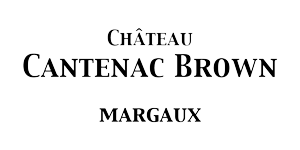Vines and viticulture have a history dating back thousands of years. This history is perpetuated daily at Château Cantenac Brown and is illustrated in the expression of the power of the earth. In this article, we will explore the key events in the history of the vineyard. Of course, it would take much more than one article to give you an exhaustive history. This article is therefore an introduction that we hope will give you the desire to make beautiful discoveries.
From a wild vine to the culture of the vine
First of all, it is necessary to underline that the vine did not always have the form that we know today. The wild vine appears in Europe during the Quaternary period, that is to say about 2.5 million years ago. At the time of this appearance, the vine is a liana which produces few fruits and which does not know bunches such as those we have today. The vine will then evolve, in particular because of the pressure of the Man on this one.
It is necessary to wait for the Mesolithic (between 9500 and 6500 BC) to obtain a vision of primo domestication of the vine. This discovery was made by finding grape seeds in some archaeological sites. However, the real domestication of the vine occurs in the Neolithic (between 6500 and 3000 BC). This domestication is illustrated by a significant increase in production volumes.
Thus, in 3000 BC, wine was known in Egypt and served at the tables of the powerful. The history of the vine does not stop there since it extends then around the Mediterranean, starting with Greece. It then radiates throughout Europe. One of the places considered as a cradle of wine production is Georgia as the archaeological discoveries there have been incredible. The machine is launched and the vine gradually spreads in many territories.
From that time on, the history of the vine is closely linked to the history of Man. Indeed, this first domestication is the work of Man. The diffusion of the culture of the vine is also the fact of the Man according to the conquests or the connections between countries. In the South-West of France, and in particular around Bordeaux, the impact of the Roman conquests was decisive for the development of viticulture.
A geographical progression of the wine culture and the intensification of exchanges
The great discoveries allow the development of the presence of the wine growing in the whole world and in a great part of the countries of the new world: in the United States, in Africa or in South America. As time went by, these exchanges intensified. The industrial revolution and the development of maritime transport marked a turning point in the history of the vine in France.
Indeed, the 19th century was a time of desolation for the European vineyard with the introduction of Phylloxera. Phylloxera is an aphid that wipes out a large part of the European vineyard. Its arrival in France dates from the beginning of the 1860s. It was not until a decade later that a solution was found to allow the vine to grow again. The solution was called grafting: it consisted of grafting European vines onto American strains, resistant to phylloxera.
A globalized viticulture, proud of its terroirs
Today, the history of the vine continues thanks to the people who bring out the best in terroirs and sublimate them all over the world. If wine is growing significantly in many regions, the expression of the power of the land remains crucial in the search for gustatory excellence. For a Grand Cru Classé of 1855, the attachment to the terroirs and to the history of wine while seeking, year after year, excellence, highlights the work of all the generations that have preceded us in the service of the vineyard.


